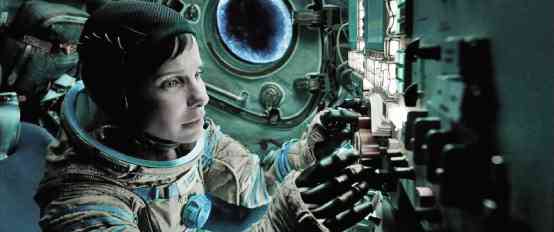Alfonso Cuarón adds substantially to his already considerable directorial cachet with his latest film, “Gravity,” in which Sandra Bullock and George Clooney play astronauts trapped in space by a series of events they have no control over.
That kind of storytelling is problematic from the get-go, but the writer-director’s challenges are compounded and confounded by the added difficulty of filming such an extended sci-fi take on terra firma.
Yes, sets can be built and other production elements can be digitally created—but, what a tall order for everyone involved to make everything come off seamlessly, believably and empathetically!
Main protagonist
Since the humans trapped in space can be counted on the fingers of one hand, “Gravity” also places extensive weight on the shoulders of its two leads, especially on Bullock, who is the cinematic drama’s main protagonist.
They have to keep viewers interested and involved for a full 90 minutes—if they falter, the entire production goes up in smoke along with them!
Well, thank goodness, it doesn’t. Cuarón makes sure that his stars are up to the task, and his perceptive and steadying directorial hand is evident from the very start, with his decision to entrust his movie’s lead roles specifically to Bullock and Clooney.
The two stars are particularly apt choices, because Bullock’s “serious” acting stance is nicely balanced by her coactor’s signature lighthearted approach to the characters he portrays.
Clooney isn’t a comedian as such, but his ebullient and tongue-in-cheek portrayal leavens Bullock’s more “sensible” and emotionally vulnerable performance—especially in scenes that test her character’s resolve, and tempt her to give up the “impossible” struggle to stay alive while all hell is breaking loose around her.
Verily, without his steadying and inspiring presence (and, quixotically, even his absence!), she would never have found the courage and smarts to rocket back to mother earth—alive!
The actors’ feat may be impressive, but it looks like child’s play when compared to the infinitely more intricate and challenging task that Cuarón has set for himself.
New universe
Since this is a sci-fi production, albeit its being set in the here and now, the filmmaker had to digitally create a new “universe” for himself and his actors.
This must have taken months if not years of prefilming preparation, but the daunting work turns out to be worth it because the finished film is an implicitly believable feat of cinematic storytelling that other directors can analyze and learn a lot from.
In fact, one of the movie’s most impressive scenes is its opening sequence, which is made to appear like one continuous shot that takes many minutes to unfold and develop.
It not only introduces us to the movie’s lead characters, but also efficiently dramatizes the tragic accidental missile firing that puts the trapped astronauts’ lives at risk. The key sequence is brilliantly conceptualized and achieved, compellingly prepping us for even more exciting scenes to come.
The film’s biggest drawback is its depiction of Bullock’s character as a well-nigh “miraculous” survivor, who single-handedly pulls off the “impossible” feat of making it back home alive. For a production that prides itself in its espousal of factual science—that’s science fiction for you.
But many viewers love the film just the same, because its achievement transcends quibbles over plausibility and enables them to fly on wings of empathetic imagination and artistry.
